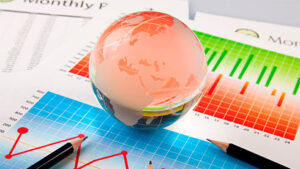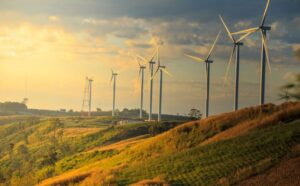
Global public debt may exceed $100 trillion (93% of global GDP) in 2024, according to the Fiscal Monitor report published by the International Monetary Fund (IMF) on Tuesday.
It is expected to continue to grow in the medium term and may rise to 100% of GDP by 2030.
At the same time, under the most unfavorable scenario, global debt could be almost 20 percentage points higher than the baseline forecast and reach 115% of GDP in 2026.
“Debt stabilization (or reduction) is likely to require much more significant fiscal adjustments than currently planned. Now is the right time to restore fiscal buffers, and delaying them is costly,” the report says.
The IMF believes that public debt will continue to grow in countries such as the United States, the United Kingdom, Brazil, France, Italy, and South Africa.
“While debt is projected to stabilize or decline in about two-thirds of countries, it will remain well above levels projected before the pandemic,” the report says. Moreover, the countries that are not expected to stabilize account for more than half of the world’s debt and about two-thirds of global GDP.
Government spending to address the problems of the “green transition” in the energy sector, population aging and security issues is likely to increase fiscal pressure in the coming years, according to the Fund’s experts.
“It’s time for governments to get their act together,” said Era Dabla-Norris, IMF Deputy Director for Fiscal Affairs. – “All countries need a strategic turnaround to reduce debt risks.
For more information about public debt and possible country defaults, please watch the video on the YouTube channel of the Experts Club think tank: https://youtu.be/gq7twYrWuqE?si=0WcmU20F95oeVKZp

Insurers in 2024 will focus on increasing investment in private markets, clean energy infrastructure and innovative technologies. According to the Reinsurance News website, this is according to the 13th annual Global Insurance Report by asset management company BlackRock.
For the third consecutive year, the report found that the majority of insurers plan to increase private market allocations, with 91% of respondents indicating they will do so in the next two years.
That figure reaches 96% for insurers in Asia Pacific and North America. The report is based on information from 410 insurance investors in 32 markets managing approximately $27 trillion in assets.
“With 2024 expected to be a landmark election year, insurers are increasingly concerned about how political uncertainty could impact macroeconomic risks, citing regulatory changes (68%) and rising geopolitical tensions and fragmentation (61%) as top concerns,” the report notes.
In addition, market risks such as interest rate volatility (69%) and liquidity problems (52%) were identified as critical.
Despite these challenges, 74% of insurers have no plans to change their current risk profiles. Many insurers cited the value of partnerships in improving their internal expertise for risk assessment and portfolio management, with 40% of respondents emphasizing that an investment partner that understands both their insurance business and operating model is critical to achieving their strategic goals.
In the public markets, 42% of insurers plan to increase investments in government and agency bonds, while 33% focus on inflation-linked bonds, as 46% view inflation as a significant macroeconomic risk. In addition, 44% of insurers are looking to increase their holdings in cash and short-term instruments to maintain liquidity.
BLACKROCK, clean energy, INNOVATION, INSURERS, INVESTMENT, private markets

Atlas Global Energy, a company with Turkish investments, plans to build new wind energy facilities in Zhytomyr region, Vitaliy Bunechko, head of the Zhytomyr Regional Military Administration, said following a meeting on Monday with Onur Kopcuoglu, the company’s technical director in Ukraine.
“We discussed the prospects for cooperation and project implementation in the region. We are confident that the new wind farm project will be another example of our fruitful cooperation and will open up new prospects for Ukraine’s energy independence,” he wrote on Facebook.
Bunechko noted that Zhytomyr region already has alternative energy projects (SPPs, hydroelectric power plants, and biogas plants) with a total installed capacity of more than 240 MW, and about 60% of boiler houses in the region run on alternative fuels.
He called the construction of wind power plants “a logical development of this track.”
Bunechko also noted that even before the full-scale invasion, the region was recognized by the international Doing Business rating as the best region in Ukraine for doing business, and none of the major investors left during the war.
“On the contrary, international companies are investing additional funds in the development of their own production in our region. We are now paying special attention to the development of alternative and distributed energy. For us, this is not only an environmental agenda, but also a wartime challenge. After all, this configuration of the power system is more resistant to enemy attacks,” explained the head of the UGA.
Atlas Global Energy’s website states that it is a renewable energy development company that has been operating in Ukraine since 2016 with a portfolio of more than 300 MW of wind and photovoltaic projects. In particular, it is reported about a 60 MW wind farm in Lviv region and a 50 MW solar power plant in Kherson region.

INGO Insurance Company (Kyiv), based on the results of the Meteorological Protection index insurance program from Syngenta, paid compensation to farmers in the season of 2024 for a total amount of UAH 231 million, which is ten times more than a year earlier.
This is the highest compensation rate since the program was launched in 2016. 97% of the farmers who joined the program in the 2024 season received record insurance indemnities due to the extremely dry and hot season during the flowering and grain filling periods. The program allowed 349 farms to partially reduce losses from adverse weather conditions, the company said in a statement.
“This season, Meteorological Protection coverage has expanded by 88% to 502 thousand hectares. Due to unfavorable weather conditions, the amount of compensation increased tenfold, and the average compensation rate was 52%. We support Ukrainian farmers with agro-technological innovations, services and unique financial products even in the frontline areas,” says Roman Khrypko, Head of Financial Programs and Insurance Solutions at Syngenta.
It is emphasized that almost 50% of the total compensation amount was paid to farms in Kharkiv, Luhansk, Zaporizhzhia, Dnipro, Kherson and Mykolaiv regions.
The main crops covered by insurance payments in the 2024 season are corn and sunflower with a total area of 335 thousand hectares and a compensation amount of UAH 225 million. Agricultural producers have insured sunflower and corn crops in 1039 applications, including 1033 applications with 99% indemnity and 386 with 100% indemnity.
The Meteorological Protection program covers the entire territory of Ukraine. In the 2024 season, Meteorological Protection offered insurance for sunflower, grain, corn and rapeseed crops against three weather risks: drought, heat and rain. The key period of the program is the flowering and grain filling phases. The terms of the program for 2025 are currently being agreed upon to further support agricultural producers.
At the center of the Meteorological Protection mechanism is an index, a special indicator that characterizes the impact of the intensity of a particular risk on crop yields. The threshold value of this index characterizes the occurrence of an insured event and corresponds to a critical yield loss for an agricultural producer, which is determined during the development of the insurance product. The index should show very accurately how a certain risk affects crop yields, and this mainly depends on the quality of the insurance product development, namely the data, mathematical model, etc. Within the program, the meteorological data point for fixing the index is a 6×8 km area, which is considered to be a perfectly acceptable area for heat or drought insurance, as these weather events cover a relatively large area.
Syngenta is a part of the Syngenta Group, one of the world’s largest agricultural technology developers with about 60 thousand employees. The company operates in more than 100 countries and works closely with producers and partners to achieve its four sustainable development priorities.
Over 22 years of operation in Ukraine, the company has built a team of agricultural experts, strong partnerships with scientific institutions, governmental and non-governmental organizations, and continues to invest in the development of business infrastructure.

On October 30, AmCham Ukraine and our member company Sayenko Kharenko are hosting our traditional Halloween Blood Donation Day, and we want YOU to help make a difference!
Dress up in your favorite costume (optional but encouraged!) and join us to donate blood for those in need. Together, we can show that heroes don’t always wear capes – sometimes, they carry a little bandage on their arm.
Whether you’re a first-time donor or a seasoned lifesaver, we welcome you all! Your contribution will help save lives, and there’s no better way to get into the Halloween spirit than by turning something spooky into something spectacular!
Follow all the rules and recommendations to prepare for donating blood.
Please take your passport and identification code with you. Citizens of other countries can also be donors if they have a residence permit in Ukraine and an identity document.
Due to security reasons, venue details will be provided one day in advance. The location has an underground shelter.

Zaporizhstal Iron and Steel Works has allocated about UAH 8 million to purchase and install a powerful air conditioner for the equipment of the BTLS-1680 rolling mill (continuous thin-sheet mill) in the Hot Strip Mill Shop.
According to the company, the important equipment requires cooling due to high operating temperatures.
It is specified that the Hisense air conditioner ensures the optimal temperature regime for the equipment of the BTLS-1680 rolling mill and ensures that the drives of the finishing stand group do not “burn out” during operation.
At the same time, it is specified that for the first time, the installation and commissioning of complex climate control equipment was carried out by specialists from the Centralized Engineering Department, Central Electrotechnical Laboratory and Metinvest-Promservice.
“Zaporizhstal is one of the largest industrial enterprises in Ukraine, whose products are in great demand among consumers both in the domestic market and in many countries around the world.
“Zaporizhstal is in the process of integration into Metinvest Group, whose major shareholders are System Capital Management (71.24%) and Smart Holding (23.76%).
Metinvest Holding LLC is the management company of Metinvest Group.